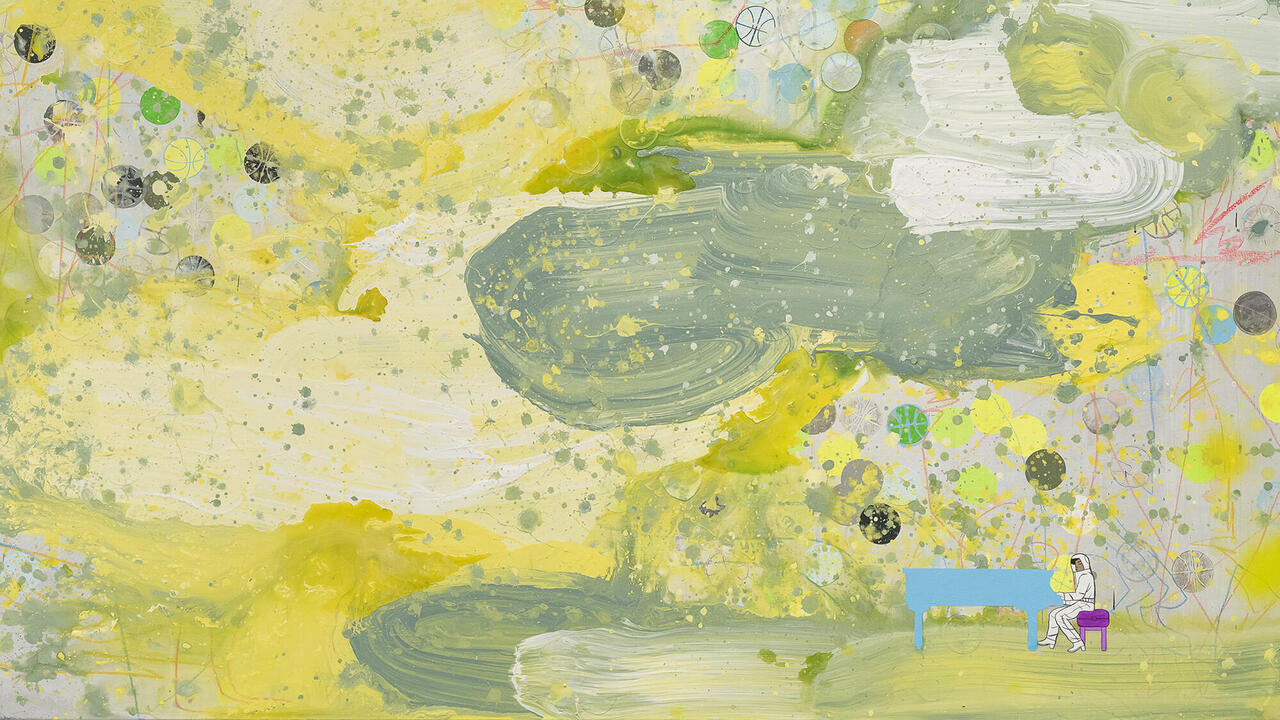Verena Dengler
Living, working and going on strike
Living, working and going on strike

At the Wiener Werkstätte and Bauhaus Dessau during the first leg of the last century, women were part of a process that aimed to integrate craft and functional design with the fine arts – not only an elevation of craft but also an attempt at putting these practices on an equal footing. While women’s participation in these projects to some extent relocated ‘women’s work’, or the immaterial labour of the home, the women themselves remain largely marginalized within the historical canon.
The Austrian artist Verena Dengler confronts this lost legacy. With her elegiac amalgamations of craft and found materials in Skulptur für Camilla Birke und Maria Likarz, Wiener Werkstätte (Sculpture for Camilla Birke and Maria Likarz, Vienna Workshop, 2009), she references former members of the workshop such as Birke and Likarz while addressing the problem of their very historicization as ‘near-forgotten Austrian women artists’. Dengler herself is often presented alongside female contemporaries who address the relationship between craft and labour – including Caitlin Keogh and Lucy McKenzie – a contextualization of her work that the artist alternately embraces and grapples with.
Her compositions strike an odd balance between the exuberant resourcefulness of craft and the precise calculation of design – a tense oscillation between the transparency of ‘authentic’ handwork and the opacity of its formal presentation. Her second solo exhibition at Galerie Meyer Kainer in Vienna – Führt ja wieder die 40-Stunden-Woche ein! 35 Stunden Schlaf sind einfach zu wenig (Re-establish the 40-hour week! 35 hours of sleep are simply not enough, 2012) – embodied this contrast. In a piece for this show called Johnny/Hobby Cigarette bucket (2011) Dengler screenprinted a Gunta Stölzl-esque weaving pattern on a strip of Laura Ashley wallpaper. The strip trailed from a shelf down to the floor, weighted down by a bucket woven from cigarette packaging, a screen printing press board and a stucco cornice that might have come from a hobby kit. Dengler’s symmetrical stacking of modified vernacular items in this work appears at once calculated and naïve. Mixing manufactured elements with handmade pieces is an accute comment on craft’s relationship to self-expression today – the pre-packaged DIY hobby as the craft of post-industrial capitalism.

The conflict between historically-accepted modes of self-expression and the labour of craft manifests clearly in Dengler’s painted embroideries. In works like Lav yah (2003–9) and Ohne Titel (Untitled, 2011), Abstract Expressionist gestures are hand-stitched into a textile with embroidery thread, only to be smudged over with paint or lacquer. The spontaneous mark is literalized, canonized – and then, in a double inversion, re-invigorated with an impulsive dab of paint. Questioning the necessity of technical skill in art, this act also pokes fun at the distinction between technical and artistic education, collapsing their socio-cultural stratification.
Immaterial labour, once the unpaid services executed by women in the home, has in today’s communication economy become directly productive of capital. Immaterial labour is no longer just women’s work – it’s everyone’s work, the type performed by all of us sitting in front of our computers each day. Today’s disintegration of the life/work divide has inverted the utopic mergeance of art and life that the Bauhaus school predicted; rather than life becoming art, life becomes work.
Dengler’s emphatically exclamation-pointed exhibition titles like Führt ja wieder die 40-Stunden-Woche ein!… or Ändere dich, Situation! (Change, Situation!, 2012) conjure protest slogans. Hers would not be a labour strike, but one akin to the concept of ‘Human Strike’ as defined by Claire Fontaine: ‘a type of strike that involves the whole life and not only its professional side … to unmask the whateverness of everybody as the open secret that social classes hide’ (Human Strike within the Field of the Libidinal Economy, 2009). A group of works by Dengler was appropriately included along with Claire Fontaine’s neon piece STRIKE (K. font V.II) (2005–7) in the group exhibition BUSY: Exhausted Self/Unlimited Ability at Vienna’s 21er Haus. Her contribution – an installation titled Unfortunately I have to go home now – there is a whole bed of work waiting for me (2012) – includes a figurative metal and embroidery sculpture topped by a tiny clay head (Self-portrait as industrial psychologist, 2012), two abstract embroideries made from knitting wool and a drawing on cardboard titled Die freie Natur ist unsere Freiheit (2012), a slogan from the German Green Movement proclaiming: ‘free nature is our freedom.’
Re-weaving the hand-me-downs of socialism and feminism, Dengler asks, not where, but when creative freedom occurs between production and consumption, between work and leisure, between the impulse and the anticipation of how one’s work will be written and preserved. What is free time? Is there freedom in art or just … more work?
















